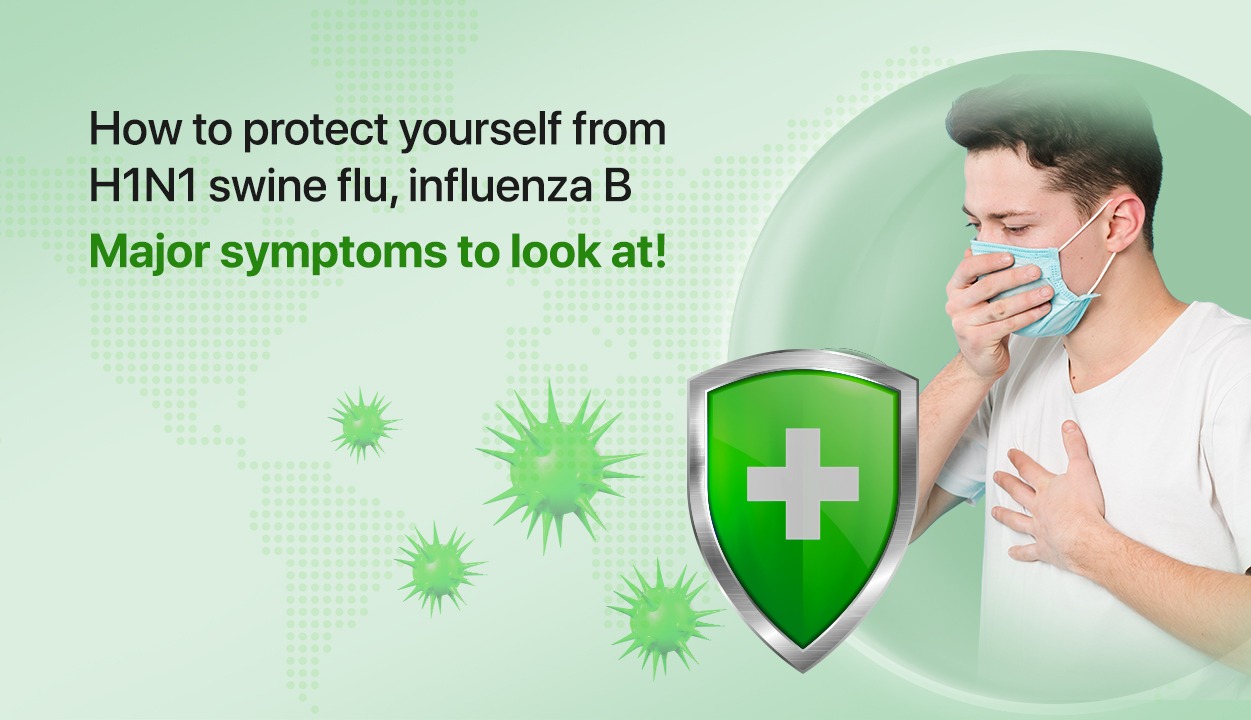
Flu Season Alert: How to Guard Against H1N1 & Influenza B
Ready or not, the flu season is back, and you better pay heed before it spirals and turns into a total nightmare! While flu does not pose much of a threat to healthy adults, it can put little ones, elderlies, moms-to-be, and anyone with a weaker immune system at risk. There is more than meets the eye, especially since H1N1 and Influenza B evolved from passing seasonal bugs to something more complicated; if ignored, they can land you straight in the hospital. So, let’s talk flu defence! Read this blog to learn about H1N1 swine flu symptoms, influenza B symptoms, H1N1 prevention tips, and influenza B prevention.
What is H1N1 & Influenza B?
H1N1, also known as swine flu, is a subtype of Influenza A, a strain that can spread from animals to humans. Ever since it appeared on the radar in 2009, it has never really left and is now one of the most common flu strains out there. Influenza B, unlike its A-list cousin, sticks to humans. It’s usually not as intense as Influenza A, but it can still affect one’s health badly! Children and those who have existing health conditions or diseases, are especially susceptible to it.
Identifying H1N1 swine flu symptoms, Influenza B symptoms
H1N1 Swine Flu and influenza B share a lot of common symptoms, and it is difficult to tell them apart without testing. Here’s what to watch out for:
- Skin feels like the tropical sun, and then all of a sudden, there are chills
- Feeling immobile
- Throat feeling like sandpaper, and the cough won’t quit.
- Full-body soreness and a pounding headache
- Endless sniffles.
- Messed up breathing, sometimes wheezing.
While H1N1 swine flu symptoms and influenza B symptoms overlap, H1N1 can sometimes cause more gastrointestinal issues, such as nausea, vomiting, diarrhea, and excruciating muscle and joint pain. Either way, if you’re feeling pulsed out, it’s best to check in with a doctor!
How H1N1 & Influenza B Spread
Apart from overlapping H1N1 swine flu symptoms and influenza B symptoms, the way both strains spread is also similar—airborne droplets, mainly through sneezing, coughing, and talking, and surface contact, which means touching contaminated objects and then touching your face, eyes, nose, and mouth, are possible ways of getting contaminated.
H1N1 prevention tips & Influenza B prevention hacks—same playbook, same goal!
Good news—staying safe from H1N1 and Influenza B is easier than you think! Since both spread in pretty much the same way (through coughs, sneezes, and those not-so-clean surfaces), the prevention game is the same too. Here’s a quick summary of H1N1 prevention tips & Influenza B prevention:
- Getting vaccinated annually reduces the risk of infection and severity of H1N1 swine flu symptoms & Influenza B symptoms. An annual flu vaccine isn’t just a checkmark on your to-do list—it cuts down your risk of infection, makes symptoms milder if you do catch it, reduces hospital cases, and protects those who need it most. Absolute win-win!
- Use soap water to wash hands particularly after being out. No sink in sight? Carry an alcohol-based sanitizer with you.
- Supercharge Your Immunity! Have healthy meals full of nutrients, drink plenty of water to maintain your body’s defense, sleep 7-9 hours straight, and make time for exercise.
- Stay at a reasonable distance from ailing people, keep your area tidy, and ensure proper ventilation near you. Fresh air equates to fewer germs lingering around!
Tap Into Protection!
Flu season means a heightened risk of H1N1 and Influenza B infections, but proactive measures can significantly reduce your chances of getting sick. If you experience symptoms as mentioned above in the blog for H1N1 or Influenza B, you must visit a doctor without waiting for the symptoms to subside. Stay informed, take precautions, and encourage others to do the same for a safer, healthier community.
